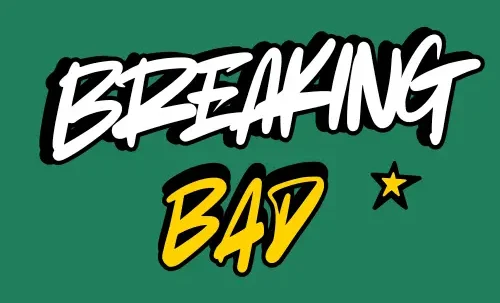Gustavo “Gus Breaking Bad” Fring – The Calm Within the Chaos
Gustavo Fring, better known as Gus Breaking Bad, is one of the smartest and most dangerous villains in television history. Calm, polite, and always in control, Gus Breaking Bad hides his criminal empire behind a smile and a fried chicken franchise. He doesn’t yell. He doesn’t rush. But when he strikes, it’s fast, brutal, and unforgettable.
Introduced as a clean-cut businessman, Gus Breaking Bad quickly becomes a key player in Walter White’s rise—and fall. His silent stare can freeze a room. His ability to stay ten steps ahead makes him more threatening than any thug with a gun. Whether managing Los Pollos Hermanos or manipulating cartel bosses, Gus is always playing the long game.
In the world of Breaking Bad, where violence and chaos reign, Gus stands out because of his order, logic, and quiet power. He’s not just a villain. He’s a legend.

First Appearance and Background
Gus Fring first appears in Breaking Bad Season 2, Episode 11, titled “Mandala.” At first glance, he’s a respected Albuquerque businessman, the proud owner of the fast-food chain Los Pollos Hermanos. He wears a crisp suit, runs a clean restaurant, and supports local law enforcement with generous donations.
But behind the scenes, Gus Breaking Bad is something very different—a drug kingpin with an empire built on structure, loyalty, and secrecy. His legitimate business is a perfect front. His employees follow strict rules. His demeanor is flawless. He hides in plain sight.
Very little is known about Gus’s early life. There are whispers about his past in Chile, and even the Mexican cartel seems unsure about his full history. This mystery adds to his fearsome aura. What we do know is that Gus is sharp, strategic, and always thinking ahead. His rise in the drug trade didn’t happen by chance—it was calculated.
Gus vs. Walter White
Gus sees potential in Walt’s chemistry skills. But he underestimates Walt’s pride and unpredictability.
As their relationship sours, Gus tries to replace Walt with Gale Boetticher. Walt responds by turning Jesse against Gus—and killing Gale.
A chess match begins. Gus watches. Walt plots. Jesse wavers.
It ends with Walt rigging a bomb to Hector’s wheelchair. When Gus comes to gloat, Hector detonates the device. Gus walks out—half his face gone—and collapses.
Symbolism and Foreshadowing
Gus represents order. Walt represents chaos. Their conflict is more than a business war—it’s a battle of ideologies.
Gus’s tidy routines and sharp suits show control. His death, with half his face blown off, symbolizes how even perfection can’t stop fate.
The box cutter, the pink shirt, the bell on Hector’s wheelchair—all are symbolic weapons in Gus’s downfall.
Portrayal by Giancarlo Esposito
Giancarlo Esposito brings Gus Breaking Bad to life with chilling precision. Every pause, glance, and smile is deliberate. His calm voice hides deadly intent.
Esposito won a Critics’ Choice Television Award and received Emmy nominations for his role. Fans and critics alike praise his performance as one of the greatest in TV history.
He later returned as Gus in Better Call Saul, expanding the character’s background and deepening his legacy.
Legacy and Cultural Impact
Gus Fring became an icon. He’s often listed among the best TV villains of all time. His image—half-burned face and all—became instantly recognizable.
From fan theories to memes, Gus’s legacy lives on. His cold logic, unique style, and memorable death left a permanent mark on pop culture.
In Better Call Saul, we see more of his empire and his partnership with Mike. But it’s in Breaking Bad that Gus’s legend was truly born.
FAQs
Q: Is Gus Breaking Bad based on a real person?
No. He’s a fictional character created by Vince Gilligan.
Q: Why did Gus Breaking Bad kill Victor?
To send a message. Disobedience and recklessness aren’t tolerated.
Q: How did Gus survive the poisoning in “Salud”?
He took a small dose and prepared an antidote. It was a calculated risk.
Q: Was Gus in the military in Chile?
It’s heavily implied. His background remains mysterious on purpose.
Q: Why is Gus’s death so iconic?
Because it’s poetic, shocking, and symbolic of his dual life—controlled on the outside, chaos underneath.
Final Thought
Gus Fring isn’t your typical villain. He’s patient. He’s disciplined. He’s terrifying in his silence. He doesn’t lose his temper—he lets others destroy themselves.
His arc in Breaking Bad is brilliant. He starts as a mystery, rises as a mastermind, and dies as a man consumed by the very control he worshipped. In a show full of unforgettable characters, Gus Breaking Bad stands in a class of his own—smart, deadly, and forever iconic.
